Protein-rich foods - what has the most protein? Table
Find out what foods are rich in protein and incorporate them into your diet - you need protein.


Learn more about our editorial process
.

Learn more about our editorial process
.

Learn more about our editorial process
.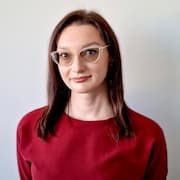

Learn more about our editorial process
.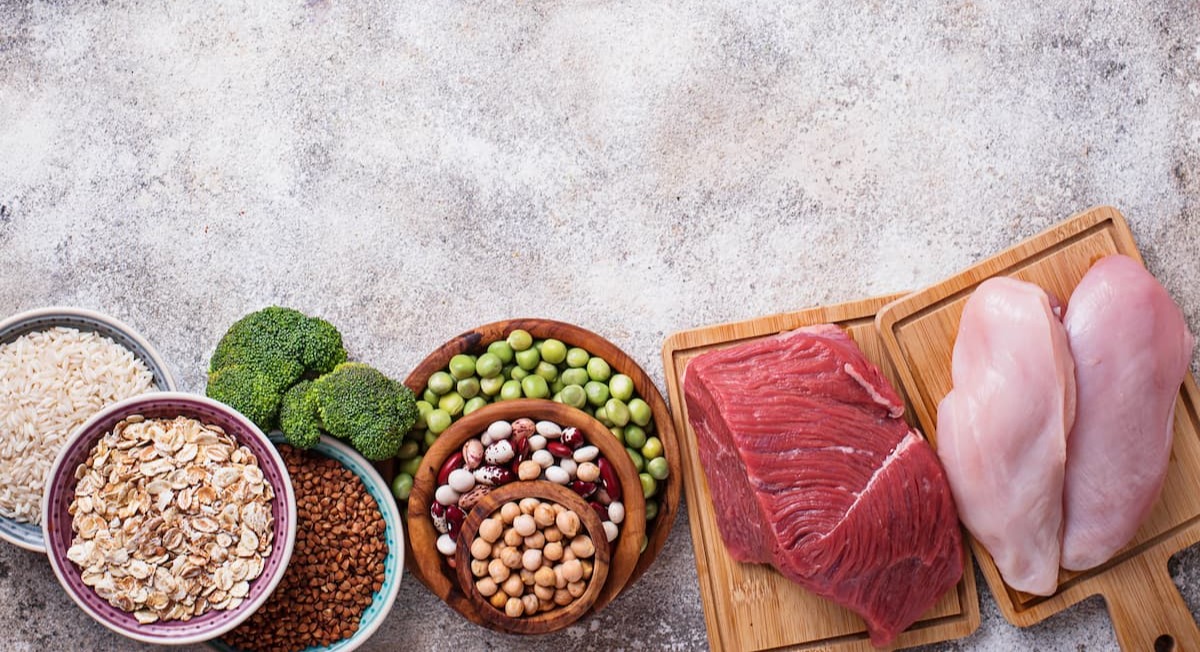
Why you can trust us
Articles on Natu.Care are written based on scientific research, data from government websites and other reliable sources. The texts are written in cooperation with doctors, nutritionists and other health and beauty experts. Articles are reviewed before publication and during significant updates.
.Learn more about our editorial process
.Information about advertisements
Content on Natu.Care may contain links to products from the sale of which we may receive a commission. When creating content, we adhere to high editorial standards and take care to be objective about the products discussed. The presence of affiliate links is not dictated by our partners, and we select the products we review ourselves completely independently.
.Learn more about our terms and Conditions
.Want to make sure you get enough protein in your diet? Great - despite appearances, you don't have to set your sights on just meat - beef on thin, chicken with rice (because how else) or cottage cheese. Vegetable sources of protein can be a 'protein bomb' too.
Check out the foods that are richest in protein, and run through the flavours - whatever type of diet you're on.
From this article you will learn:
- What are the best sources of animal and plant protein.
- What are the best sources of animal and plant protein?
- Whether plant protein is "inferior" to animal protein.
- How much protein per day do you need to consume.
- How much protein do you need to consume?
See also:
- Whey protein concentrate (WPC)
- Whey protein isolate (WPI)
- Whey protein hydrolysate (WPH)
- Vegetable protein
- Casein
- Protein nutrient
- Protein before or after training?
- How much protein per day?
What is protein?
Protein (proteins) makes up 20% of your mass and is one of the three most important macronutrients in your diet, along with carbohydrates and fats. It is made up of many amino acids and has a key building function in the body. It shapes connective tissue, muscles, bones, teeth, hair and nailsand.
In addition to these proteinsand:
- regulate metabolism (as enzymes and hormones),
- have transport functions (e.g. carry nutrients),
- are involved in the regulation of physiological processes (e.g. in signal transduction),
- form antibodies that are responsible for the body's defence against the action of microorganisms,
- Participate in maintaining the body's acid-base balance,
Without an adequate amount of protein in the body, the processes of growth, regeneration of tissues, cells and organs or even the production of hormones do not function properly.
Products rich in protein
Protein-rich products, containing more than 20 g of protein per 100 g, are primarily animal products, e.g. meat, dairy, fish, cheese, and plant sources such as soya, nuts, seeds. High-protein products also include protein supplements, bars or drinks.
Learn how much protein is hidden in animal products, plant-based products and other alternatives that you can consume recreationally. Protein content can vary depending on the manufacturer, preparation or quality of the product.
Protein content can vary from product to product.
Animal sources of protein
|
Product |
Protein content protein per 100 gand |
|
Ementhaler cheese |
29 g |
|
Duck breast |
28 g |
|
Chicken breast |
27 g |
|
Beef |
26 g |
|
Gouda cheese |
25 g |
|
Cheddar cheese |
25 g |
|
Macreplant |
24 g |
|
herring |
23 g |
|
Turkey breast |
22 g |
|
Calf |
20 g |
|
Norwegian salmon |
20 g |
|
Lean quark |
19 g |
|
Half-fat quark |
19 g |
|
Pork |
18 g |
|
Fat quark |
16 g |
|
Skyr |
12 g |
|
Egg |
12 g |
|
Country cheese |
11 g |
Vegetable sources of protein
|
Product |
Protein content protein per 100 gand |
|
Soy (raw grains) |
37 g |
|
Peanuts |
25 g |
|
Nut butter |
25 g |
|
Almonds |
24 g |
|
Sunflower seeds |
21 g |
|
Pistachios |
20 g |
|
Tempeh |
19 g |
|
Pumpkin seeds |
19 g |
|
Flaxseed |
18 g |
|
Cashew nuts |
18 g |
|
Tofu |
12 g |
|
Miso paste |
12 g |
|
Edamame |
11 g |
|
Chickpeas |
|
|
Lentils |
|
|
Red beans |
8.7 g |
And where is the fruit?
Fruits do not contain much protein. They are rich in fibre, vitamins, minerals and other valuable compounds, but the protein content is low. Examples of fruits containing protein (per 100 g) include: coconut (4 g), guava fruit (2.5 g), avocado (2 g), dried dates (2 g), raspberries (1.2 g), bananas (1.2 g).
Protein-rich foods - table
|
Product |
Protein content protein per 100 gand |
|
90-100 g |
|
|
90-95 g |
|
|
30-82 g |
|
|
Pea protein isolate (vegan protein supplement) |
|
|
80 g |
|
|
Micellar casein (micellar casein - protein nutrient) |
75 g |
|
Yeast flakes |
45 g |
|
Protein bars |
5-33 g |
What has the most protein?
The most protein from meat products is provided by duck breast (28 g/100 g), from dairy products, cottage cheese dominates (19 g/100 g), from cheese, Emmentaler (29 g/100 g). From plant sources, soya (37 g/100 g) and nuts and seeds (approx. 18-24 g/100 g) will provide the most protein.
Animal protein versus plant protein
Vegetable and zoonotic protein sources are important and will provide you with protein, but animal protein has several advantages over plantand:
- is better absorbed,
- contains all 9 essential amino acids,
- provides more vitamin B12 and iron.
This is why it is a good idea to provide protein from both plant and animal products.
Plant protein is made up of amino acids just like animal protein. Unfortunately, their proportions in plants are disturbed due to the presence of limiting amino acids, which reduce the absorption and utilisation of protein taken in with food.
Protein from plants is a very important source of protein.
Expert Marta Kaczorek - privately a fan of the vege diet - scores the advantages of plant proteins:
Plant protein reduces the risk of heart disease by 14% - if a portion of 100g of dry pulses appears in your diet 4 times a week, and reduces the likelihood of colon cancer by up to 42% when a portion of 100g of dry pulses appears in the diet at least once a week.
In a vegan diet, it is crucial to properly compose sources of plant protein in order to obtain the complete set of essential amino acids. The correct combination of plant proteins enables the correct process of body protein synthesis.
Marta Kaczorek explains:
To make sure you provide yourself with a complete set of amino acids on any given day, combine products in sets, such as:
- beggary groats + red beans,
- macaroni + lentils,
- bread + chickpea paste (hummus),
- lentils + tempeh,
Not at once, uff!
The American Academy of Nutrition and Dietetics says that complementary protein does not have to be consumed in one meal. The complete set of amino acids simply needs to be consumed throughout the day, thus ensuring adequate nitrogen balanceand.
ALLDEYNN WHEYROSE
Product description
Protein supplement containing whey protein concentrate (WPC) with added digestive enzymesós. It digests well, is an easy and quick way to provide protein and can be consumed by people with lactose intolerance. It will work well not only as a stand-alone drinkóy but also as a tasty addition to shakesóy, dessertsóy, oatmeal or omeletóy.
WHEYROSE contains five digestive enzymes that help break down macromolecules into smaller components, so that the ingredients from food and the nutrient are absorbed even better. This minimises or even eliminates digestive discomfort. Such an addition is rare in protein supplements.
.Pros and cons
Protein supplement containing whey protein concentrate (WPC) with added digestive enzymesós. It digests well, is an easy and quick way to provide protein and can be consumed by people with lactose intolerance. It will work well not only as a stand-alone drinkóy but also as a tasty addition to shakesóy, dessertsóy, oatmeal or omeletóy.
WHEYROSE contains five digestive enzymes that help break down macromolecules into smaller components, so that the ingredients from food and the nutrient are absorbed even better. This minimises or even eliminates digestive discomfort. Such an addition is rare in protein supplements.
.Additional information
Protein supplement containing whey protein concentrate (WPC) with added digestive enzymesós. It digests well, is an easy and quick way to provide protein and can be consumed by people with lactose intolerance. It will work well not only as a stand-alone drinkóy but also as a tasty addition to shakesóy, dessertsóy, oatmeal or omeletóy.
WHEYROSE contains five digestive enzymes that help break down macromolecules into smaller components, so that the ingredients from food and the nutrient are absorbed even better. This minimises or even eliminates digestive discomfort. Such an addition is rare in protein supplements.
.User review
Protein supplement containing whey protein concentrate (WPC) with added digestive enzymesós. It digests well, is an easy and quick way to provide protein and can be consumed by people with lactose intolerance. It will work well not only as a stand-alone drinkóy but also as a tasty addition to shakesóy, dessertsóy, oatmeal or omeletóy.
WHEYROSE contains five digestive enzymes that help break down macromolecules into smaller components, so that the ingredients from food and the nutrient are absorbed even better. This minimises or even eliminates digestive discomfort. Such an addition is rare in protein supplements.
.ALLDEYNN VEGEROSE
Product description
A protein supplement made from five plant proteins enriched with acacia fibre, flaxseed, MCT oil and the probiotic-prebiotic complex LactoWise®. It is a synbiotic thatós stimulates the developmentóy and growth of beneficial bacteria in the gastrointestinal tract and shows a beneficial effect on the condition of the digestive system.
Pros and cons
A protein supplement made from five plant proteins enriched with acacia fibre, flaxseed, MCT oil and the probiotic-prebiotic complex LactoWise®. It is a synbiotic thatós stimulates the developmentóy and growth of beneficial bacteria in the gastrointestinal tract and shows a beneficial effect on the condition of the digestive system.
Additional information
A protein supplement made from five plant proteins enriched with acacia fibre, flaxseed, MCT oil and the probiotic-prebiotic complex LactoWise®. It is a synbiotic thatós stimulates the developmentóy and growth of beneficial bacteria in the gastrointestinal tract and shows a beneficial effect on the condition of the digestive system.
Expert opinion
A protein supplement made from five plant proteins enriched with acacia fibre, flaxseed, MCT oil and the probiotic-prebiotic complex LactoWise®. It is a synbiotic thatós stimulates the developmentóy and growth of beneficial bacteria in the gastrointestinal tract and shows a beneficial effect on the condition of the digestive system.
ALLDEYNN VEGEROSE
Product description
A protein supplement made from five plant proteins enriched with acacia fibre, flaxseed, MCT oil and the probiotic-prebiotic complex LactoWise®. It is a synbiotic thatós stimulates the developmentóy and growth of beneficial bacteria in the gastrointestinal tract and shows a beneficial effect on the condition of the digestive system.
Pros and cons
A protein supplement made from five plant proteins enriched with acacia fibre, flaxseed, MCT oil and the probiotic-prebiotic complex LactoWise®. It is a synbiotic thatós stimulates the developmentóy and growth of beneficial bacteria in the gastrointestinal tract and shows a beneficial effect on the condition of the digestive system.
Additional information
A protein supplement made from five plant proteins enriched with acacia fibre, flaxseed, MCT oil and the probiotic-prebiotic complex LactoWise®. It is a synbiotic thatós stimulates the developmentóy and growth of beneficial bacteria in the gastrointestinal tract and shows a beneficial effect on the condition of the digestive system.
Expert opinion
A protein supplement made from five plant proteins enriched with acacia fibre, flaxseed, MCT oil and the probiotic-prebiotic complex LactoWise®. It is a synbiotic thatós stimulates the developmentóy and growth of beneficial bacteria in the gastrointestinal tract and shows a beneficial effect on the condition of the digestive system.
How much protein do you need to eat?
According to official recommendations, you should eat 0.8g protein per kg of body weightand. This is the absolute minimum. Your protein requirement increases when you are physically active, in which case your supply should be between 1.6 and 2.2 g protein per 1 kg of body weight.
Taking more than 2.2 g protein/kg body weight does not have much benefit for people who are training, i.e. this amount does not result in post-workout muscle protein synthesis being higher or recovery after running being fasterand.
High protein intake, even above 2.2g protein/kg body weight, works well for some people on a reduction diet, as protein can increase the feeling of satiety after a meal.
If you don't know how much protein to eat to achieve specific results (e.g. building muscle mass or reducing without excessive hunger) take advice from a dietitian who can help you determine the best breakdown of proteins, fats and carbohydrates in your diet.
See also:
- Best sources of omega-3 fatty acids
- Products rich in vitamin B12
- Products rich in iron
- Best sources of vitamin D
- What is collagen in?
Summary
- Protein-rich foods are primarily zoonotic, e.g. meat, dairy, fish, cheese, and plant-based foods such as soya, nuts, seeds.
- Protein-rich foods are primarily zoonotic, e.g. meat, dairy, fish, cheese, and plant-based foods such as soya, nuts, seeds.
- Most protein is contained in poultry (duck, turkey, chicken), beef, fish (mackerel, herring, salmon) cheeses (Emmenthaler), nuts (peanuts), seeds (pumpkin seeds), seeds (flaxseed) - all have more than 20 g of protein per 100 g.
- Fruits do not contain much protein. They are rich in fibre, vitamins, minerals and other valuable compounds, but the protein content is low.
- Protein content is low.
- Vegetable protein is a little less digestible by the body and does not contain all essential amino acids, but you only need to take care with the variety and composition of sources to make it complete.
- You should eat a minimum of 0.8g of protein per kg of body weight. Protein requirements increase when you are physically active, in which case your supply should be between 1.6 and 2.2 g of protein per 1 kg of body weight.
FAQ
What has the most protein in 100 g?
The most protein is found in raw soya beans, which contain 37g of complete protein in 100g. Soy is also a great source of fibre, healthy omega fatty acids, phytoestrogens, vitamins (e.g. B group, vitamin K) and minerals (e.g. copper, selenium).
What is a complete protein?
A complete protein contains all amino acids (20 to be exact) in proportions that allow their full biological utilisation. The full aminogram can be consumed from animal products as well as from some plants.
Is protein nutrition healthy?
Yes, protein nutrients are a good way to provide yourself with complete protein. Choose protein supplements from trusted manufacturers who have laboratory tests on their products. Also follow the daily serving recommendations and do not exceed them.
What's high in protein and low in fat?
Products that are high in protein and low in fat per 100g include chicken breast, lean fish (e.g. cod, pollock), egg whites, lean meat (e.g. turkey, lean beef), lean cottage cheese.
Some
Some protein nutrients e.g. WPH (whey protein hydrolysates) are low in fat and high in protein. They contain approximately 90-95% concentrated protein, 0-3% carbohydrates, 1-3% fats per 100 g dry weight.
What has a lot of protein and few calories?
Products that contain a lot protein with relatively low kcal content are, for example:
- egg whites,
- fat-free quark,
- indica (white turkey meat),
- lean fish (e.g. cod, pollock, tuna in its own sauce),
- lean meat (e.g. lean beef, skinless chicken),
- lentils,
- chickpeas,
- lean cheese (e.g. light country cheese, skyr, kvarg).
- lean cheese.
What's high in protein and low in carbohydrates?
Products that are high in protein yet low in carbohydrates are, for example:
- eggs,
- cottage cheese,
- lean meat (e.g. chicken, turkey),
- lean fish (e.g. cod, pollock, tuna in its own sauce),
- tofu,
- beef,
- lentils,
- chickpeas,
- chia seeds,
- skimmed yellow cheese,
What has the least protein?
Foods that contain the least protein are fruits, vegetables (except legumes), oils, clarified butter, white bread, mineral waters, tea, sugar, and sweets.
Which nuts have the most protein?
Peanuts contain the most protein - approximately 25g of protein in 100g. Other nuts rich in protein include almonds (24 g/100 g), pistachios (20 g/100 g) and cashews (18 g/100 g).
What bar has a lot of protein?
MATRIX Pro 32 is a bar that contains up to 27 g protein (33.75 g/100 g). It is a 'meal replacement' bar. It is large (80 g), filling and contains 286 kcal per serving. Ideal for those on a low-carb diet low-carb, it is also low in fat and sweetened with sucralose.
Which cheese has a lot of protein?
Ementhaler cheese is high in protein, at 29g in 100g. Other cheeses rich in protein include Gouda and cheddar (25 g/100 g), cottage cheese (19 g/100 g), Icelandic-type cheese (12 g/100 g), and country cheese (11 g/100 g).
Which protein nutrient has the most protein?
The most protein is contained whey protein hydrolysates (WPH) -protein makes up as much as 90-95% of the dry weight. Other nutrients such as concentrates, isolates, casein, plant-based nutrients are also good sources of protein.
Is a high-protein diet healthy?
No, high protein diets e.g. Dukan or Atkins are not healthy as excess protein is associated with many health risks and can lead to inflammation of the kidneys, failure of the liver, deficiency of fats and carbohydrates, which are also crucial for health.
Sources
See all
Adhikari, S., Schop, M., de Boer, I. J. M., & Huppertz, T. (2022). Protein Quality in Perspective: A Review of Protein Quality Metrics and Their Applications. Nutrients, 14(5), 947. https://doi.org/10.3390/nu14050947
Allowances, N. R. C. (U.S.) S. on the T. E. of the R. D. (1989). Protein and Amino Acids. In Recommended Dietary Allowances: 10th Edition. National Academies Press (US). https://www.ncbi.nlm.nih.gov/books/NBK234922/
Antonio, J., Candow, D. G., Forbes, S. C., Ormsbee, M. J., Saracino, P. G., & Roberts, J. (2020). Effects of Dietary Protein on Body Composition in Exercising Individuals. Nutrients, 12(6), 1890. https://doi.org/10.3390/nu12061890
Arentson-Lantz, E., Clairmont, S., Paddon-Jones, D., Tremblay, A., & Elango, R. (2015). Protein: A nutrient in focus. Applied Physiology, Nutrition, and Metabolism = Physiologie Appliquee, Nutrition Et Metabolisme, 40(8), 755-761. https://doi.org/10.1139/apnm-2014-0530
FoodData Central. (n.d.). Retrieved November 16, 2023, from https://fdc.nal.usda.gov/fdc-app.html#/
Jarosza, M., Rychlik, E., Stoś, K., & Charzewska, J. (n.d.). Nutrition standards for the Polish population and their application.
LaPelusa, A., & Kaushik, R. (2023). Physiology, Proteins. In StatPearls. StatPearls Publishing. http://www.ncbi.nlm.nih.gov/books/NBK555990/
Westerterp-Plantenga, M. S. (2003). The significance of protein in food intake and body weight regulation. Current Opinion in Clinical Nutrition and Metabolic Care, 6(6), 635-638. https://doi.org/10.1097/00075197-200311000-00005
Wu, G. (2016). Dietary protein intake and human health. Food & Function, 7(3), 1251-1265. https://doi.org/10.1039/C5FO01530H
Editorials
Meet the team


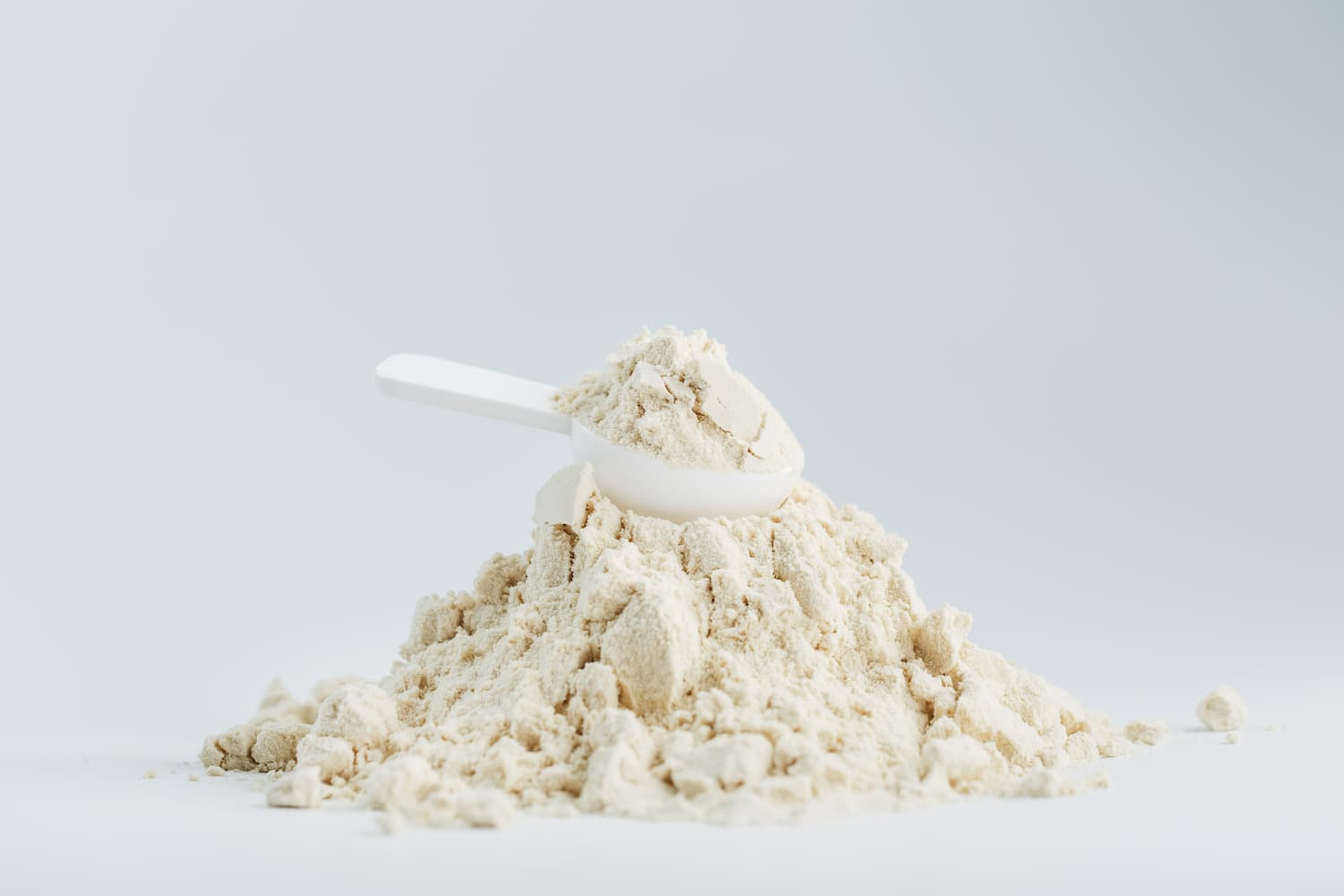
Vegan protein supplements add protein to the diets of athletes and non-athletes alike.
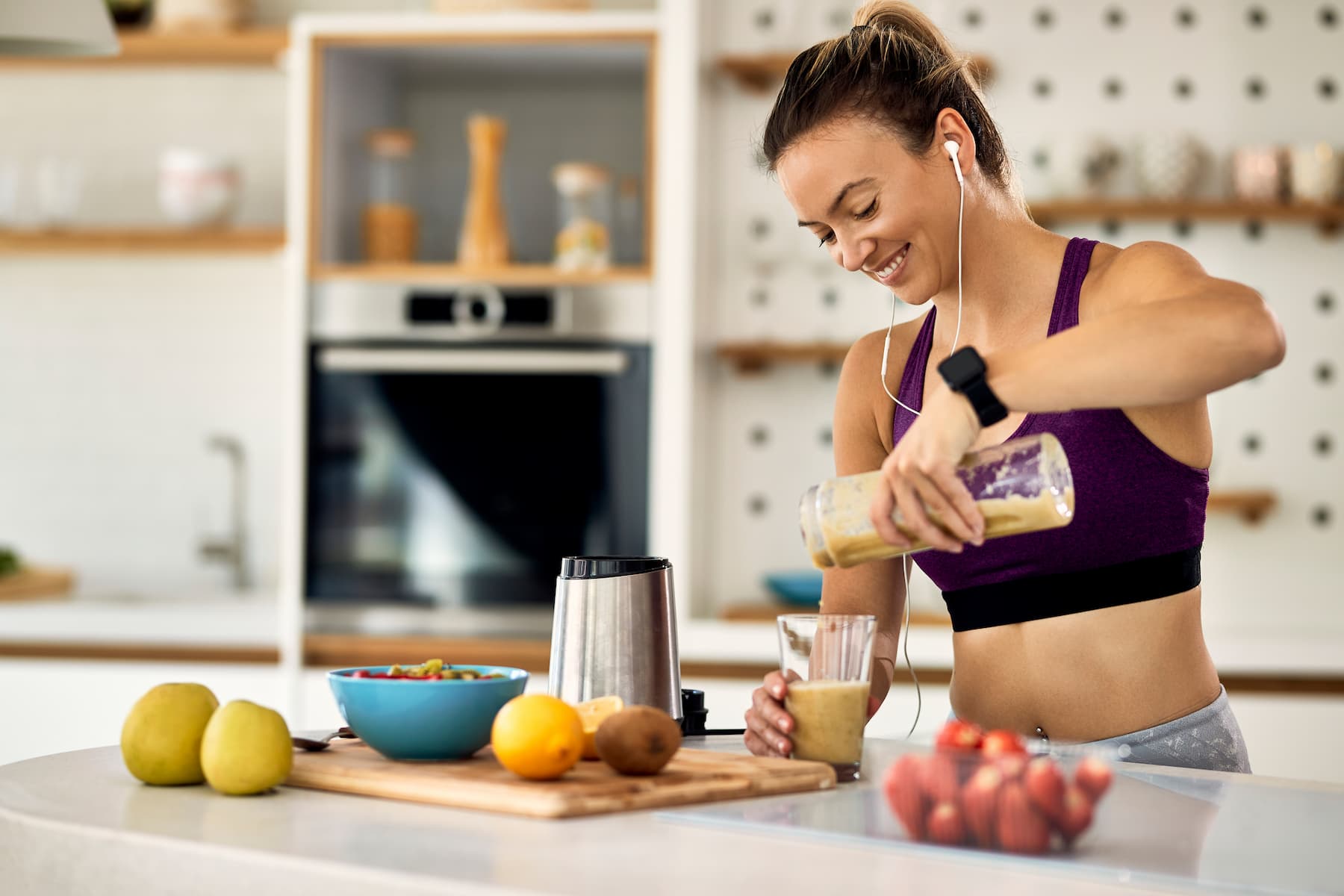
Look after the protein in your diet whether you are on a weight gain, weight reduction or weight maintenance.
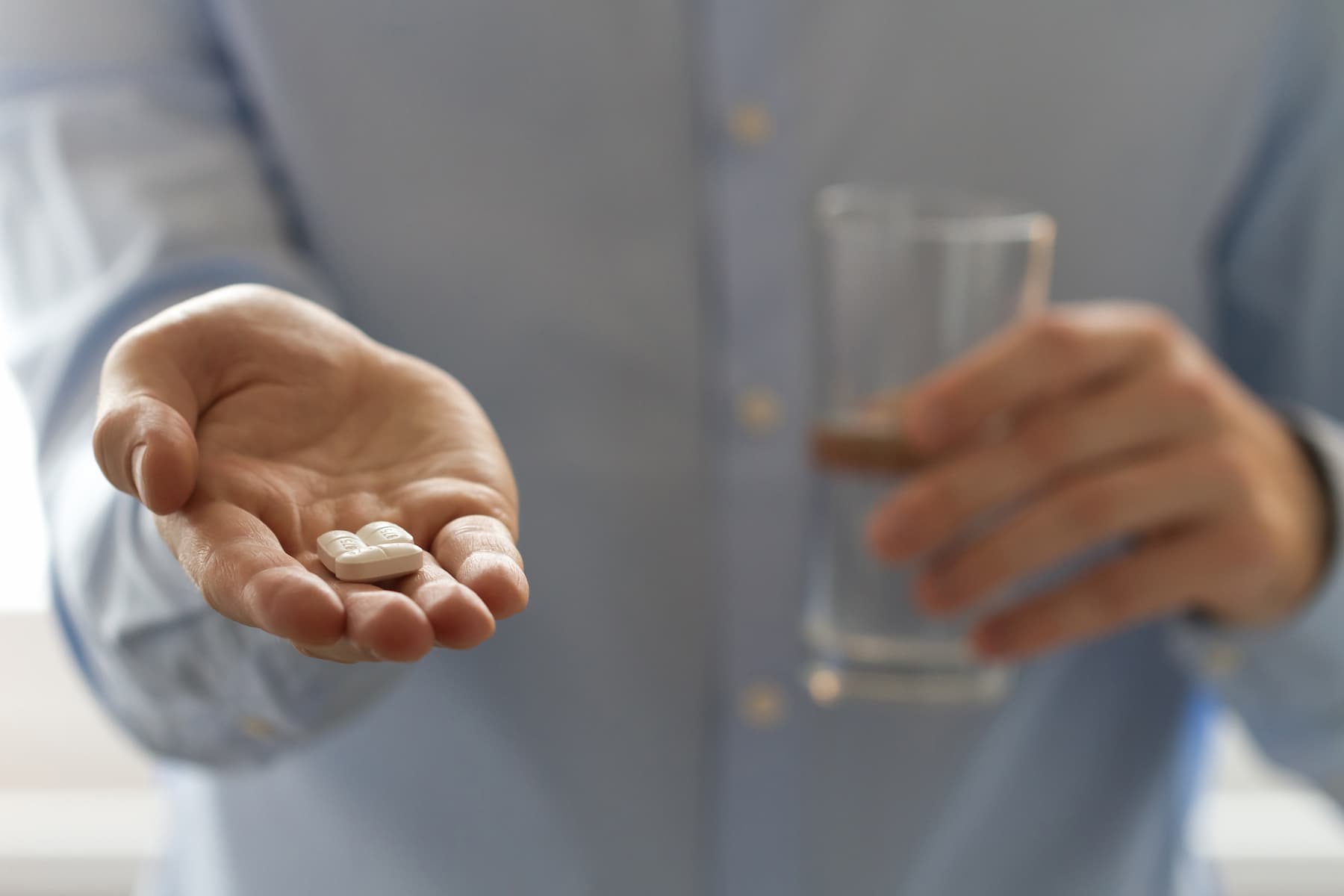
Methionine is a little-known amino acid that is responsible for many functions in the body.



